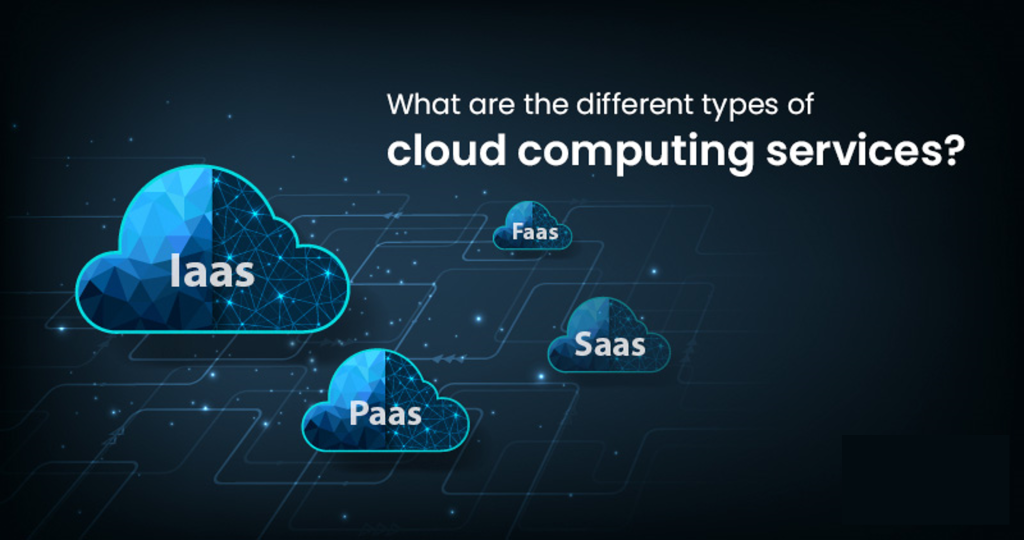What is cloud computing?
Cloud computing refers to delivering computing services (such as servers, storage, databases, software, and other resources) through the Internet. Instead of hosting your own servers and software, you may pay a cloud provider to have access to a shared pool of resources. This implies that you may use as much or as little computing power as you require and simply pay for what you use. It also eliminates the need to maintain hardware, upgrade software, or hire IT personnel to administer it.
Email, file storage, and software programs accessible via a web browser are popular examples of cloud computing services. Cloud computing has grown in popularity because it enables people and enterprises to be more flexible, adaptable, and cost-effective by giving on-demand access to computer resources without the need for a major upfront investment in hardware or infrastructure. It offers internet safety features that make the connection secure.
Types of cloud services
IaaS, FaaS, and SaaS are three different types of cloud computing services. Each of these services provides a different level of abstraction to the users and requires varying degrees of management and responsibility. In this article, we will discuss the differences between IaaS, FaaS, and SaaS.
- Infrastructure as a Service (IaaS) IaaS is a cloud computing model where the cloud provider offers virtualized computing resources, including servers, storage, networking, and other infrastructure components. With IaaS, users can create and manage their virtual machines (VMs), operating systems, and applications. The cloud provider is responsible for the underlying infrastructure, such as the physical servers, network, and storage hardware.
- Function as a Service (FaaS) FaaS is a serverless computing model that allows developers to deploy and run small pieces of code (functions) in response to specific events or triggers. With FaaS, developers can focus on writing code without worrying about managing servers or infrastructure. The cloud provider is responsible for managing the underlying infrastructure, including the servers, runtime environment, and scaling.
Examples of FaaS providers include AWS Lambda, Azure Functions, and Google Cloud Functions.
- Software as a Service (SaaS) SaaS is a cloud computing model where the cloud provider offers software applications to customers over the Internet. With SaaS, customers can use software applications without having to install or maintain any software or hardware. The cloud provider is responsible for managing the entire infrastructure, including the servers, software, and data.
Differences between IaaS, FaaS, and SaaS
Cloud computing is one of the high technological trends that is dominating the new decade. It offers various benefits and streamlines software development and deployment remarkably.
Key Differences between IaaS, FaaS, and SaaS:
- Management Responsibility: With IaaS, users are responsible for managing the operating system, middleware, and applications. With FaaS, users only need to worry about the code they write, while the cloud provider manages the runtime environment. With SaaS, the cloud provider manages everything, including the software, hardware, and infrastructure.
- Scalability: IaaS and FaaS offer scalability, but users need to manage the scaling themselves. With SaaS, the cloud provider handles the scaling automatically.
- Pricing Model: IaaS and FaaS typically charge users based on the usage of resources, such as CPU usage, storage, and network bandwidth. With SaaS, the pricing is typically based on the number of users, features, or subscription models.
- Flexibility: IaaS and FaaS offer more flexibility to users, as they can choose their own operating systems, applications, and programming languages. With SaaS, users have less flexibility, as they are limited to the software provided by the cloud provider.
Key Takeaways on cloud services:
IaaS, FaaS, and SaaS are three different models of cloud computing, each with its own set of advantages and disadvantages.
IaaS, or Infrastructure-as-a-Service, is a model that provides users with virtualized computing resources such as servers, storage, and networking. With IaaS, users have a high level of control and flexibility over their infrastructure and can choose to manage and customize it as much as they want. However, this also means that users are responsible for managing the underlying hardware and software, as well as ensuring the security and availability of their applications.
FaaS, or Function-as-a-Service, is a model that allows users to run application code without having to manage the underlying infrastructure. Users write and deploy small, self-contained units of code (called functions) that are triggered by specific events, such as user requests or changes to a database. FaaS offers a high degree of scalability since it automatically scales the underlying infrastructure based on demand. However, users have limited control over the underlying infrastructure and may have to make trade-offs in terms of performance and complexity.
SaaS, or Software-as-a-Service, is a model that provides users with fully managed software applications that are delivered over the Internet. Users access the software through a web browser or other client interface, and the provider handles all aspects of the infrastructure and software management. This means that users have minimal management responsibilities, and can focus on using the software to achieve their business objectives. However, SaaS often has limited customization options and may not be suitable for complex or highly specialized use cases.
Conclusion
In conclusion, IaaS, FaaS, and SaaS are three different cloud computing models that offer users different levels of abstraction and management responsibilities. While IaaS and FaaS offer more flexibility and control, SaaS provides a fully managed solution that requires little to no management from the users.
Author: Kapil Panchal
A passionate Technical writer and an SEO freak. Having served in the Information technology, Services, and Product industry for years, I relish writing about technology, and love sharing impeccable insights on various platforms. I believe in constant learning and am passionate about being better every day.
Read more: Micron Memory Storage Solution Revolutionizing Data Storage





